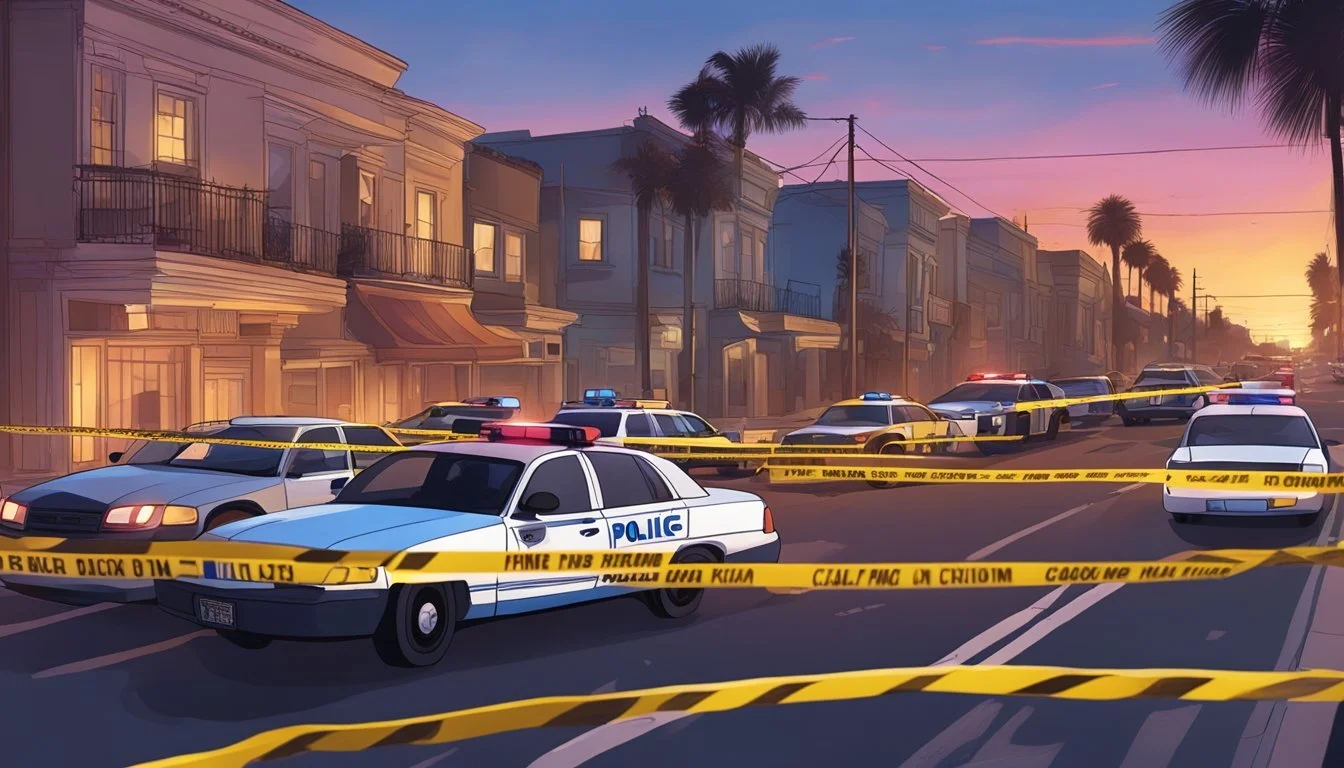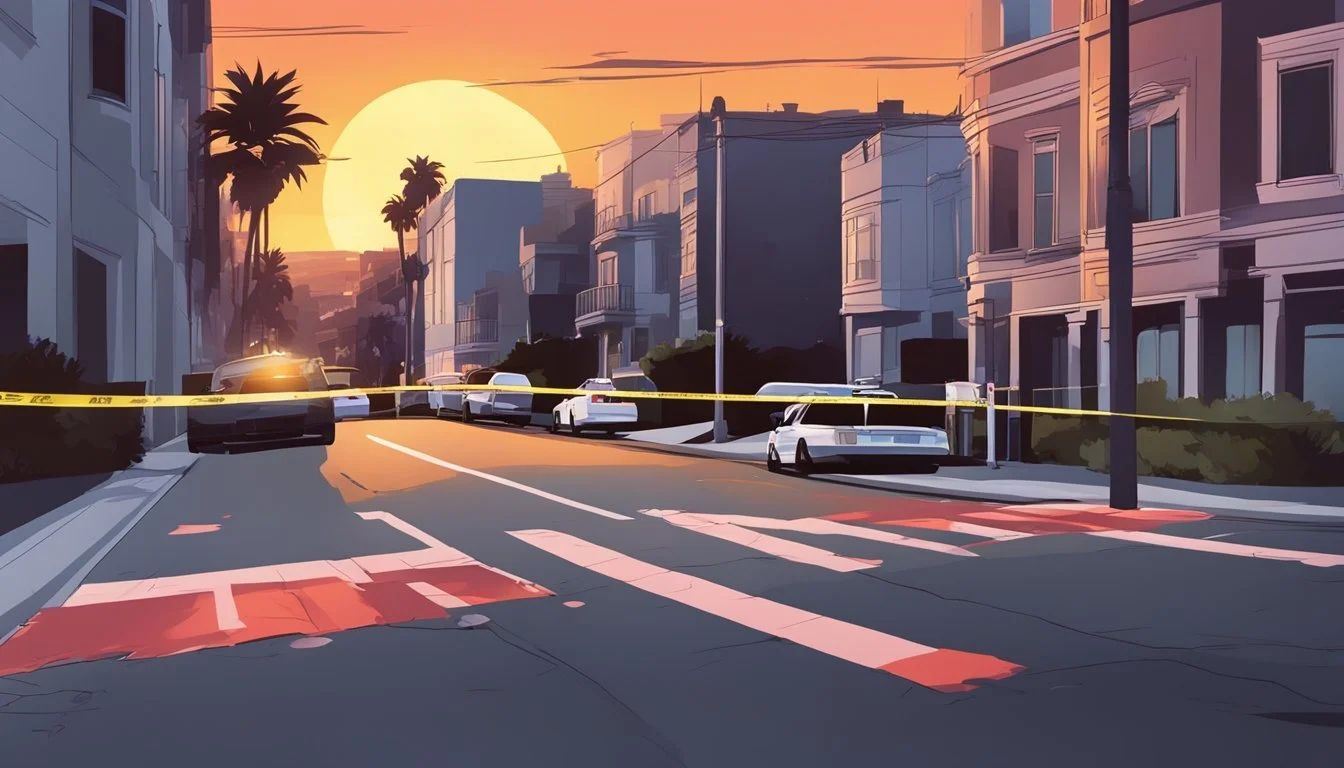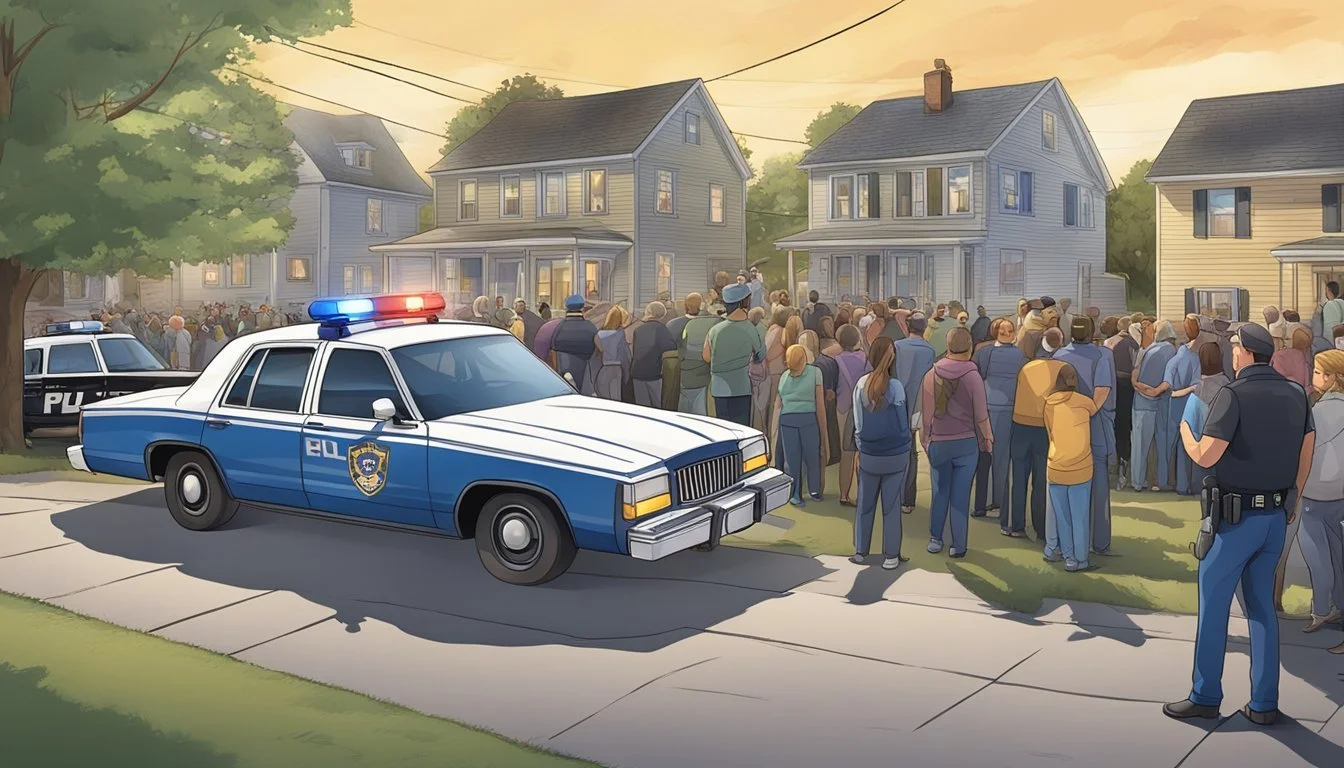Sunset Boulevard Bloodbath: Douglas Clark and Carol Bundy's Killing Spree
LA's 1980 Serial Murder Rampage
In the summer of 1980, Los Angeles was gripped by terror as a series of brutal murders unfolded along the infamous Sunset Strip. The perpetrators were Douglas Daniel Clark and Carol Mary Bundy, a couple whose killing spree would earn them the chilling moniker "The Sunset Strip Killers."
Clark and Bundy were responsible for at least seven deaths, targeting teenage girls and female sex workers in a horrific rampage that shocked the city. Their crimes were marked by acts of extreme violence and depravity, including necrophilia, which added an even more disturbing dimension to their already heinous acts.
The case of the Sunset Strip Killers captivated the public and media alike, not only for the brutality of the crimes but also for the twisted dynamic between Clark and Bundy. Their relationship and the motives behind their killing spree would become the subject of intense scrutiny and speculation, leaving a dark stain on the glittering facade of Hollywood's most famous boulevard.
Profile of the Killers
Douglas Daniel Clark and Carol Bundy formed a deadly duo known as the Sunset Strip Killers. Their crimes shocked Los Angeles in the summer of 1980, targeting vulnerable victims along Sunset Boulevard.
Douglas Daniel Clark
Born on March 10, 1948, Douglas Clark developed into a manipulative and sadistic individual. He worked as a boiler operator at a power plant, but harbored dark fantasies of murder and necrophilia.
Clark targeted young women and sex workers, luring them with his charm before brutally killing them. He often kept victims' heads as trophies, indulging in his necrophilic desires.
His crimes escalated quickly, with at least six confirmed victims in just a few months. Clark showed no remorse for his actions, maintaining his innocence even after conviction.
Carol Bundy
Carol Bundy, born in 1942, became entangled in Clark's web of violence. A vocational nurse, she initially aided Clark by helping dispose of evidence and luring victims.
Bundy was deeply infatuated with Clark, submitting to his twisted fantasies and participating in the murders. She eventually confessed to killing a former lover who threatened to expose their crimes.
Unlike Clark, Bundy expressed remorse for her actions. She cooperated with authorities, providing crucial evidence that led to Clark's conviction.
Timeline of the Sunset Strip Murders
Douglas Clark and Carol Bundy's killing spree terrorized Los Angeles in 1980. Their crimes shocked the city and left a trail of victims along the Sunset Strip.
The Beginning of the Spree
In June 1980, Douglas Clark and Carol Bundy embarked on their murderous rampage. Clark, a boiler operator, met Bundy, a vocational nurse, in January of that year. Their relationship quickly turned violent and sadistic.
The first known victim was Marnette Comer, a 17-year-old runaway. Her body was found on June 11, 1980, in the San Fernando Valley. She had been shot in the head.
Shortly after, on June 24, the body of 16-year-old Exxie Wilson was discovered. Like Comer, Wilson had been shot execution-style. Clark kept her head as a trophy.
Key Murders and Victims
The killing spree intensified throughout the summer of 1980. Clark targeted young women and sex workers along the Sunset Strip.
Notable victims included:
Karen Jones, 24, found on July 28
Cynthia Chandler, 21, discovered on July 31
Two unidentified teenage girls, found on August 9
Clark's modus operandi involved picking up victims, sexually assaulting them, and then shooting them. He often mutilated the bodies post-mortem.
Bundy actively participated in at least one murder. She killed Jack Murray, her ex-boyfriend, on August 5, 1980. She decapitated him to prevent him from revealing information about the murders.
The Capture and Arrest
The reign of terror ended in August 1980. Bundy, overcome with guilt, confessed to her co-workers about Murray's murder on August 11.
Police arrested Bundy on August 11, 1980. She quickly implicated Clark in the other murders. Clark was apprehended the next day at work.
During the investigation, police found evidence linking Clark to the murders, including personal items belonging to victims. Bundy cooperated with authorities, providing crucial details about the crimes.
The arrests brought relief to Los Angeles, ending the summer of fear caused by the Sunset Strip Killers.
Crime Scenes and Methodology
Douglas Clark and Carol Bundy committed a series of brutal murders in Los Angeles, California during the summer of 1980. Their crimes involved sex workers, extreme violence, and mutilation.
Areas of Operation
Clark and Bundy primarily targeted victims along Sunset Boulevard in Los Angeles. They focused on areas known for prostitution, picking up young women and girls. The pair also committed murders in their own apartment.
Some victims' bodies were dumped in the San Fernando Valley. One victim was found near the Golden State Freeway. Clark disposed of remains in various locations around Los Angeles County to avoid detection.
Modus Operandi
The killers used Clark's car to pick up victims. They often lured young women with promises of money or drugs. Clark shot most victims in the head with a .25 caliber pistol.
After killing victims, Clark engaged in necrophilia. He decapitated some victims and kept their heads as trophies. Bundy assisted by helping dispose of bodies and cleaning up crime scenes.
In one instance, Bundy herself murdered a former lover who knew too much about their crimes. She shot and decapitated him.
Psychological Profile
Clark exhibited traits of a sexual sadist and necrophiliac. He derived pleasure from killing and abusing corpses. Clark showed no remorse and blamed others for his actions.
Bundy displayed dependent personality traits and was easily manipulated by Clark. She participated in the crimes out of a twisted desire to please him. Unlike Clark, Bundy eventually expressed guilt and cooperated with authorities.
Both killers had troubled backgrounds. Clark claimed to have been abused as a child. Bundy had a history of failed relationships and low self-esteem. Their union created a deadly folie à deux that enabled their killing spree.
Legal Proceedings
Douglas Clark and Carol Bundy faced severe legal consequences for their brutal crimes. The judicial process involved multiple stages, including trials, appeals, and testimonies that shed light on the horrific nature of their actions.
Trial and Conviction
Clark's trial began in 1983, lasting several months. Prosecutors presented overwhelming evidence, including forensic findings and witness testimonies. The jury deliberated for three days before finding Clark guilty on six counts of first-degree murder. He was also convicted of other charges, including sexual contact with human remains.
Carol Bundy pleaded guilty to two counts of first-degree murder in 1983. She agreed to testify against Clark as part of a plea bargain. Bundy received a sentence of 52 years to life in prison for her role in the killings.
Death Penalty and Appeals
The court sentenced Douglas Clark to death for his heinous crimes. He was transferred to San Quentin State Prison's death row to await execution. Clark filed numerous appeals over the years, attempting to overturn his conviction and death sentence.
The California Supreme Court reviewed Clark's case multiple times. Despite his efforts, the court upheld both his conviction and death sentence. Clark remained on death row for decades, outliving his accomplice Carol Bundy.
Statements and Testimonies
During the trial, prosecutors called several witnesses to testify against Clark. Carol Bundy's testimony proved crucial in securing Clark's conviction. She provided detailed accounts of their crimes, describing Clark's actions and motivations.
The Marin County Coroner presented forensic evidence, linking Clark to the victims through DNA and other physical evidence. Clark maintained his innocence throughout the proceedings, often making outlandish claims and conspiracy theories about the crimes.
Victim impact statements from families of the murdered women highlighted the devastating effects of Clark and Bundy's actions. These emotional testimonies underscored the brutality of the crimes and the lasting trauma inflicted on the victims' loved ones.
Media Coverage and Cultural Impact
The Sunset Strip Killers case attracted significant attention from local and national media outlets. It also left a lasting mark on popular culture, inspiring books, documentaries, and TV episodes.
Local and National Media
The Los Angeles Times provided extensive coverage of the Clark and Bundy murders. Journalist Louise Farr wrote several in-depth articles about the case, offering detailed accounts of the investigation and trial proceedings.
National news networks picked up the story, broadcasting updates as the case unfolded. The sensational nature of the crimes, combined with the Los Angeles setting, fueled public interest across the country.
Television news programs featured interviews with law enforcement officials and legal experts. These segments often focused on the gruesome details of the murders and the twisted relationship between Clark and Bundy.
Influence on Popular Culture
The Sunset Strip Killers case inspired various true crime books. Louise Farr authored "The Sunset Murders," a comprehensive account of the crimes and their aftermath.
Several documentaries examined the case, offering viewers a deeper look into the killers' backgrounds and motives. These films often included interviews with investigators and survivors.
Television crime dramas drew inspiration from the Clark and Bundy murders. Episodes of popular shows incorporated elements of the case, exploring themes of partnership in crime and the dark side of Los Angeles nightlife.
True crime podcasts have revisited the Sunset Strip Killers, introducing younger generations to the case. These audio series often provide new perspectives and analysis of the events.
Aftermath and Legacy
The aftermath of Douglas Clark and Carol Bundy's killing spree left a lasting impact on Los Angeles and the victims' families. Their capture and subsequent legal proceedings shed light on the dark underbelly of the Sunset Strip in the early 1980s.
Carol Bundy's Confession
Carol Bundy played a crucial role in bringing the murders to light. In August 1980, she confessed to her coworkers about her involvement in the killings. This confession led to her arrest and the subsequent capture of Douglas Clark. Bundy provided detailed accounts of the murders, helping prosecutors build a strong case against both herself and Clark.
She pleaded guilty to two counts of murder and was sentenced to 52 years to life in prison. Bundy's cooperation with authorities was seen as a key factor in unraveling the full extent of their crimes.
Prison Life of Douglas Clark
Douglas Clark was sentenced to death for his role in the murders. He spent over four decades on California's death row at San Quentin State Prison. Clark maintained his innocence throughout his incarceration, filing numerous appeals and legal challenges.
On October 11, 2023, Clark died of natural causes at the age of 75 while still on death row. His death marked the end of a long and contentious legal battle that had stretched on for years after the murders.
Victims' Memorials
The victims of the Sunset Strip Killers were primarily young women and teenage girls. In the years following the murders, various efforts were made to honor their memory. Local community groups organized vigils and memorial services for the victims.
Some families of the victims established scholarships or charitable foundations in their loved ones' names. These initiatives aimed to create something positive from the tragedy and ensure the victims were not forgotten.
The case also led to increased awareness about the vulnerability of sex workers and runaways in Los Angeles, prompting discussions about improved safety measures and support systems for at-risk individuals.
Analysis and Commentary
The Sunset Strip murders committed by Douglas Clark and Carol Bundy shocked the public and challenged investigators. Their case highlights complex psychological factors, media influences, and law enforcement hurdles in dealing with serial killers.
Psychological Commentary
Clark exhibited classic traits of antisocial personality disorder and sexual sadism. His necrophilic tendencies and targeting of vulnerable victims like teenage girls and sex workers point to severe psychopathology. Bundy's role as an accomplice raises questions about folie à deux, where a dominant partner influences a submissive one into criminal behavior.
Clark's military background and Bundy's nursing career provided covers of normalcy, complicating early detection. Their relationship dynamic centered on shared deviant fantasies, escalating to actual violence.
Experts note that the pair's willingness to keep "trophies" from victims aligns with common serial killer behavior patterns.
The Role of Media
Media coverage of the Sunset Strip murders was extensive, sometimes bordering on sensationalism. The lurid details of necrophilia and grisly murders captured public attention.
News reports focused heavily on the duo's sexual deviance, potentially overshadowing deeper analysis of societal factors. Some critics argued this approach risked glorifying the killers.
The case spawned numerous true crime documentaries and books. These works often attempted to dissect the killers' psyches and motives.
Media portrayals may have influenced public perceptions of safety in Los Angeles and attitudes towards sex workers, who were frequent targets.
Policing and Investigation Challenges
Law enforcement faced significant hurdles in solving the Sunset Strip murders. The transient nature of some victims complicated identification and evidence gathering.
Investigators struggled to connect the dots between seemingly unrelated crimes initially. The killers' ability to dispose of bodies in different locations further fragmented the investigation.
Forensic limitations of the early 1980s hampered efforts to link physical evidence to suspects. Advances in DNA technology years later proved crucial in solidifying the case against Clark and Bundy.
The investigation highlighted the need for better coordination between jurisdictions when dealing with potential serial killers operating across a wide area.







